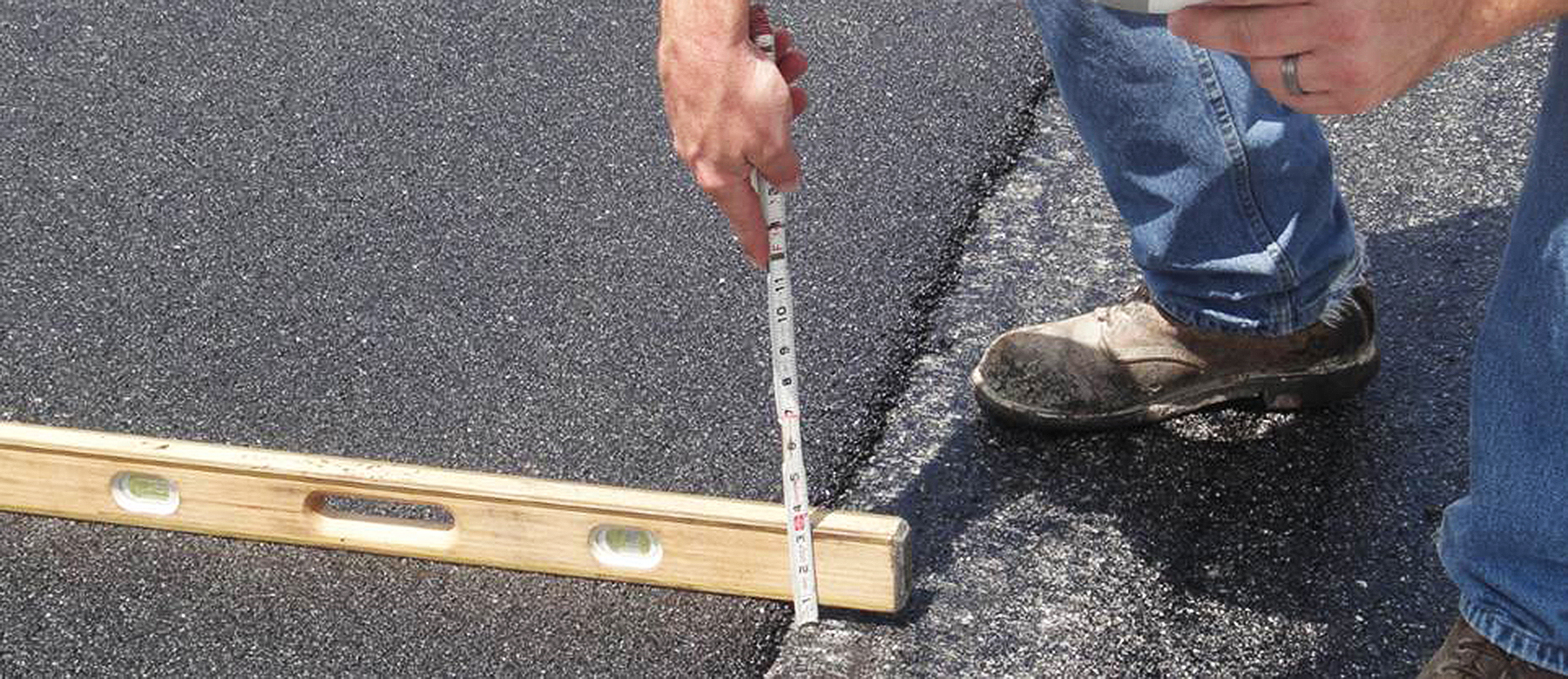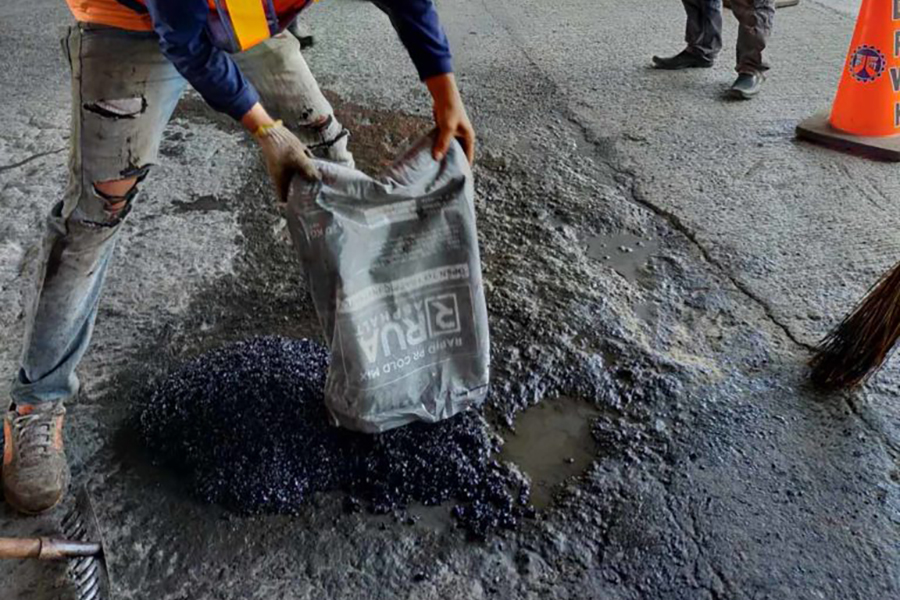Hot Mix Asphalt Paving: Elevating Commercial Parking Lot Requirements
Hot Mix Asphalt Paving: Elevating Commercial Parking Lot Requirements
Blog Article
Opening the Keys of Warm Mix Asphalt Innovation
Exploring the midsts of hot mix asphalt modern technology discovers a world where exact solutions and thorough processes converge to shape our roads and framework. The blend of fillers, binders, and accumulations isn't just a building job but a tactical orchestration of longevity and performance.
Importance of Warm Mix Asphalt
Warm Mix Asphalt plays a critical duty in modern-day facilities growth because of its durability and cost-effectiveness. As one of the most frequently utilized leading product for roads, freeways, and parking area, Hot Mix Asphalt offers a variety of benefits that contribute to its relevance in construction jobs. One vital benefit is its capacity to hold up against rush hour loads and harsh climate condition, supplying a dependable and durable surface for transport networks. Furthermore, Hot Mix Asphalt is cost-efficient in both initial construction and lasting maintenance, making it a favored option for numerous facilities projects.
The durability of Warm Mix Asphalt stems from its composition, that includes accumulations, binder, and filler products that are thoroughly picked and blended to fulfill particular performance demands. This accurate combination results in a versatile and strong sidewalk that can withstand frequent use without significant deterioration. Warm Mix Asphalt is 100% recyclable, additional improving its sustainability and ecological advantages. On the whole, the value of Hot Mix Asphalt in facilities growth can not be underrated, as it continues to be a foundation of contemporary construction techniques.
Elements of Asphalt Mixes
The composition of asphalt mixes contains very carefully selected aggregates, binder, and filler materials that are vital for attaining particular efficiency needs. Aggregates are the key component of asphalt blends, giving strength and security. These aggregates can be natural, such as crushed rock or smashed rock, or artificial, like recycled products from old pavements. The binder, generally asphalt or asphalt concrete, holds the aggregates with each other and offers flexibility and durability to the mix. The option of the binder is crucial as it directly influences the mix's efficiency in different climate problems. Fillers, such as moisturized lime or Portland concrete, are utilized to improve the mix's workability and aging resistance. Angled Parking.
The combination and proportion of these elements play a substantial function in determining the high quality and efficiency of the asphalt mix. Designers meticulously create the mix to satisfy certain requirements, taking into consideration variables like web traffic quantity, environment problems, and pavement life-span. Correct choice and harmonizing of aggregates, binder, and fillers are essential for creating long lasting, lasting asphalt sidewalks.
Mixing and Production Strategies
:max_bytes(150000):strip_icc()/low-section-of-man-working-758486719-59da6d0a054ad90010617854.jpg)
Once the aggregates are picked, the binder, often asphalt cement, is contributed to bind the products with each other. The binder's high quality and quantity considerably impact the mix's flexibility, resistance, and toughness to ecological aspects. Additionally, fillers like hydrated lime or Rose city concrete may be integrated to enhance certain features of the asphalt mix, such as its workability or moisture resistance.
During manufacturing, the accumulations and binder are warmed, usually between 250-325 ° F(121-163 ° C ), to help with blending and guarantee correct covering of the accumulations. The mixing process must be complete to achieve a homogeneous mixture that advertises the wanted performance characteristics of the asphalt. Different methods, such as batch blending or drum mixing, are utilized to attain top quality and constant asphalt blends for building click tasks.
Factors Impacting Asphalt Performance
Elements influencing asphalt performance include a range of variables that influence the sturdiness, longevity, and total high quality of asphalt sidewalks. One vital aspect is the quality of products used in the asphalt mix.

Ecological problems additionally influence asphalt performance. Temperature level variations, moisture seepage, and website traffic lots can all impact the architectural stability of the pavement. Layout considerations, such as sidewalk density and drainage, are essential in guaranteeing the long-lasting efficiency of the asphalt sidewalk. By very carefully considering regrading these specialists, factors and designers can enhance asphalt performance and enhance the solution life of sidewalks.
Lasting Practices in Asphalt Innovation

WMA allows for the production and placement of asphalt blends at lower temperature levels contrasted to typical hot-mix asphalt, resulting in decreased energy consumption and greenhouse gas emissions. The use of porous asphalt mixes can assist reduce stormwater runoff problems by permitting water to penetrate with the sidewalk and into the ground, advertising all-natural water purification and reenergize procedures.
Final Thought
To conclude, hot mix asphalt innovation plays a critical role in modern facilities advancement because of its sturdiness and cost-effectiveness. By thoroughly stabilizing parts, using appropriate mixing methods, and taking into consideration various variables, engineers can produce premium asphalt blends that hold up against rush hour lots and harsh weather. Accepting sustainable practices, such as making use of recycled materials and warm-mix technologies, even more boosts the ecological kindness of asphalt innovation.
Mixing and manufacturing strategies in hot mix asphalt modern technology involve the accurate mix and handling of aggregates, binder, and fillers to create a sturdy and high-performance asphalt mix.Factors influencing asphalt performance include a range of variables that influence the longevity, long life, and general quality of asphalt sidewalks. Sustainable practices in asphalt modern technology incorporate various efforts aimed at lowering the environmental effect of asphalt manufacturing and paving procedures. By use this link integrating reclaimed asphalt sidewalk (RAP) and recycled asphalt tiles (RAS) right into new asphalt blends, the industry can significantly reduce the consumption of raw products and power, while additionally decreasing land fill waste.
WMA allows for the manufacturing and positioning of asphalt blends at lower temperature levels contrasted to conventional hot-mix asphalt, resulting in minimized power consumption and greenhouse gas discharges.
Report this page